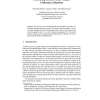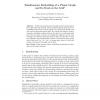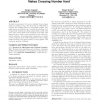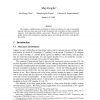641 search results - page 7 / 129 » On Planar Quasi-Parity Graphs |
126
click to vote
ICALP
2003
Springer
15 years 5 months ago
2003
Springer
Abstract. We present an expected polynomial time algorithm to generate a labeled planar graph uniformly at random. To generate the planar graphs, we derive recurrence formulas that...
107
click to vote
CORR
2002
Springer
14 years 11 months ago
2002
Springer
Traditional representations of graphs and their duals suggest the requirement that the dual vertices should be placed inside their corresponding primal faces, and the edges of the ...
GD
2005
Springer
15 years 5 months ago
2005
Springer
We present a reduction method that reduces a graph to a smaller core graph which behaves invariant with respect to planarity measures like crossing number, skewness, and thickness....
118
click to vote
COMPGEOM
2010
ACM
15 years 4 months ago
2010
ACM
A graph is near-planar if it can be obtained from a planar graph by adding an edge. We show that it is NP-hard to compute the crossing number of near-planar graphs. The main idea ...
JACM
2002
14 years 11 months ago
2002
We consider a modified notion of planarity, in which two nations of a map are considered adjacent when they share any point of their boundaries (not necessarily an edge, as planar...




